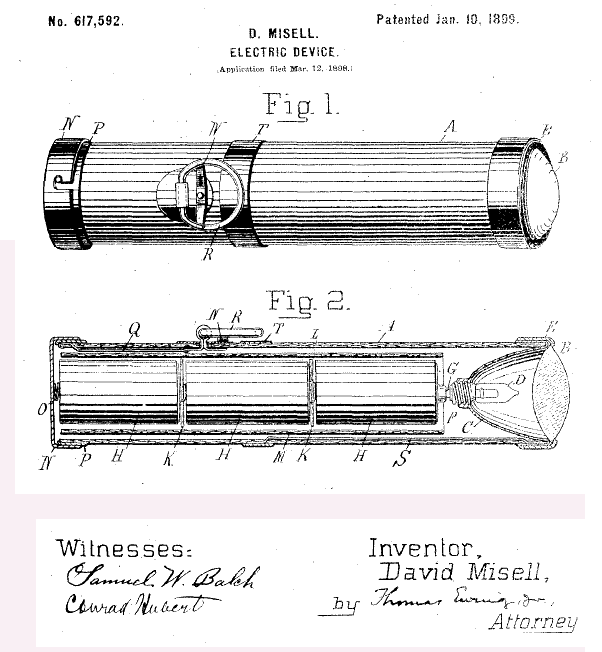First Flashlights invention
Don’t get fooled by Google!
We are on a mission:
Stop relying on Amazon reviews, top 10 websites, hearsay, or even manufacturer’s specs.
We test flashlights to separate the wheat from the chaff.
Want to know how?
Read one of our 701 in-depth flashlight reviews!
1lumen selects and reviews products personally. We may earn affiliate commissions through our links, which help support our testing.
The invention of the first flashlight
The very first flashlight was invented by a guy named David Misell, a British inventor, living in the United States. He had come up with something pretty cool, especially in that day and age, and called it the “electric hand torch”. This was back in 1899, and flashlights have come a very long way since then.
This early flashlight was like a metal tube. At one end of the tube, there was a special kind of light bulb, and covered with something shiny to help spread the light around. It must have been something like a mirror, so it could focus the beam into a certain direction.
To make this flashlight work, it needed 3 D-sized batteries. Bu batteries back then were not like the ones we have today. They didn’t last very long, so you had to change them often.

A portable handheld flashlight was the first step in the right direction. In the following decades, it would slowly replace certain other light sources like candles or lanterns for certain tasks.
People who used flashlights were likely police officers and miners. It was much smaller than a lantern, and you could even make the beam shine in 1 direction.
Over the years, flashlights have improved a lot.
The very first flashlight must have only produced a few lumens, at most, but these days, we can have a couple hundred lumens from a tiny keychain flashlight. And as of today, we already have flashlights reaching over 100,000 lumens.
Over the years, different types of light sources had been used, starting with incandescent light bulbs, with a tungsten filament, which were filled under vacuum with argon, krypton or even xenon.
Much later, in the late 20th century, we saw HID flashlights coming a little popular, and then later, in the 1990’s the LED flashlight.
One of the newest and latest flashlight technologies is LEP. LEP stands for Laser Excited Phosphor, and its light source is not LED, HID or incandescent, but a blue laser. By point the blue laser at phosphor, the blue beam turns into a white-ish light, and make it one of the best long-distance flashlights currently available. On average, it throws 2-3 times farther than the best LED flashlight in the same size.
Besides these technologies, the size and shapes of flashlights have also changed drastically. Currently, there are tens of different flashlights categories. They include: tactical flashlights, powerful flashlights, rechargeable flashlights, mini flashlights, keychain flashlights, headlamps, penlights, long-distance flashlights, EDC flashlights, and many more.
If you’re interested in knowing what flashlights look like these days, we wrote several buyers guides on different types of flashlights. Check out one of these:
Helpful guides:
1lumen selects and reviews products personally. We may earn affiliate commissions through our links, which help support our testing.
FAQ: first invented flashlights
-
Who invented the first flashlight
The first handheld flashlight was invented by a British inventor David Misell, living in the United States.
-
In what year was the first flashlight invented.
The first flashlight was invented in 1899, by David Misell, about 12 years after the first dry cell batteries were invented.
-
Did they have flashlights in 1910, 1920?
Yes, and by the time of 1922, there were an estimated 10 million flashlights users in the United States.